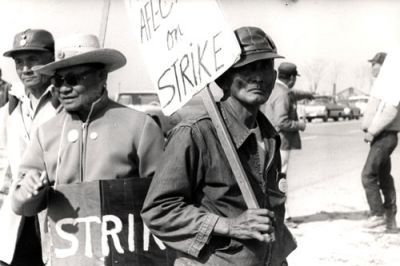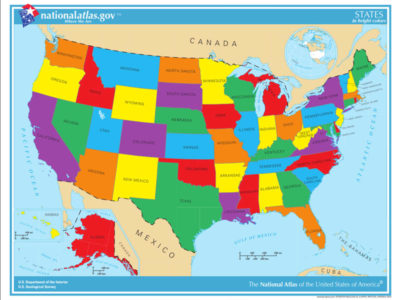Losing Chevron: What Does It Mean for California?
The Supreme Court’s decision in Loper Bright will not necessarily impact how California courts review our state agency determinations. But we’ll feel it in other ways.
A question I’ve been getting a lot since the Supreme Court overturned the Chevron doctrine is: “What does this decision mean for California?” Here are three takeaways about how the Golden State is likely—or not—to be impacted at first blush.
First, the decision does have the potential to impact California directly in some pending litigation. For example, there’s a current challenge to EPA’s waiver under the Clean Air Act for the Air Resources Board’s Advanced Clean Trucks regulations (ACT), which require that zero-emission trucks represent an increasing proportion of in-state heavy-duty truck sales. (A crash course in the waiver: While states typically can’t adopt their own tailpipe emissions standards, Clean Air Act section 209 contains a special carveout for California to seek a waiver to adopt separate standards, which EPA is to grant unless certain conditions are met; the overwhelming majority of waiver requests California has made have been approved.) Among the bases for that challenge is an argument that EPA lacks statutory authority under the Clean Air Act to grant a waiver for ACT because it cannot itself mandate electric vehicle adoption, and so cannot grant a waiver to California to set such a mandate.
In a Chevron-less world, we don’t know how reviewing courts will rule on the merits of that argument, but what is clear is that they do not need to defer to EPA’s own interpretation of its authority to grant a waiver under section 209 for such regulations. Reviewing courts may take EPA’s views into account—but are not obligated to do so. In the case of ACT, the public health and environmental consequences are high: The diesel engines that the rule is seeking to replace cause serious air pollution in some of the state’s most pollution-overburdened communities, which are primarily low-income communities of color.
Second, the decision is unlikely to impact the way California courts treat their own reviews of California state agency determinations. California courts have their own set of principles for giving weight to state agency interpretations of state law, known as “interpretive rules.” (“Quasi-legislative” rules, where agencies have expressly been delegated the Legislature’s own lawmaking power, are more narrowly reviewed by courts.) There are “two broad categories of factors relevant to a court’s assessment of the weight due an agency’s interpretation: those ‘indicating that the agency has a comparative interpretive advantage over the courts,’ and those ‘indicating that the interpretation in question is probably correct.’” Yamaha Corp. of America v. State Bd. of Equalization (1998) 19 Cal.4th 1, 12 (internal citations omitted).
The first set of factors consider whether the agency has some form of special technical knowledge or expertise that would make it uniquely qualified to offer an interpretation of the statute. Id. The second set of factors consider, in essence, how thorough and stable the agency’s interpretation of the statute has been over time—whether the agency adopted its interpretation roughly contemporaneously with enactment of the statute, whether the interpretation was well-considered, and whether the interpretation is long-standing. Id. at 12-13. In articulating these principles, rather than relying on Chevron, the California Supreme Court drew on the United States Supreme Court’s earlier decision in Skidmore v. Swift Co., 323 U.S. 134 (1944); Justice Roberts’ Loper Bright majority opinion cites that same case for the proposition that courts may continue to rely on agency interpretations for guidance without owing them any presumption of deference. In sum, California’s own jurisprudence already provides for a different weighing of agencies’ statutory interpretations than Chevron did and is therefore not likely to be impacted by today’s decision.
Finally, the decision underscores the augmented role states, including California, will need to continue to play in fighting climate change. The decision, combined with other recent jurisprudence, consolidates ever more power in the federal judiciary. And by requiring a level of statutory clarity that is often not present (or that courts can find not to be present) in existing laws—and that Congress is unlikely to legislate, given its current dysfunction—it also constraints the ability of federal agencies like the EPA to utilize a robust suite of regulatory tools to do their work. The end results: More and more federal regulatory questions will be resolved by courts, not necessarily with uniformity, and federal agencies are likely to be chilled in their attempts to use existing statutory authorities to combat novel problems like climate change.
In fighting to keep our planet livable, states like California will need to continue to think about how they can use their own state authorities to legislate and regulate. But states will not make as much progress alone as they would have with a strong federal partner, and that will have real consequences for the climate, both here in California, and beyond.
Reader Comments
10 Replies to “Losing Chevron: What Does It Mean for California?”
Comments are closed.







Is there a fix at the federal level to reverse the decision on Chevron deference? Could the federal legislature pass a lay saying that Chevron deference is the law and that when the statutes are unclear as to the specific rule-making and implementation requirements, that the default is to use the appropriate agencies’ interpretation?
Hi Jeremy — Great questions. I’ll be blogging about that next Monday.
Dan Farber
I’m sure we do not want unelected regulators trying to fill in the blanks for sloppily written legislation. Why not demand — as the court has here, in Loper — the congress do its constitutionally job?
I’m sure we do not want unelected regulators trying to fill in the blanks for sloppily written legislation. Why not demand — as the court has here, in Loper — that congress do its constitutionally job?
The judiciary has stepped into the power vacuum that has been created by the bought and paid for Congress and the leaders of both parties, who have given us nothing but terrible candidates for so long. As long as our elected officials depend on big money contributions, this will just continue.
I’m 54 years of age, and a lifelong resident of the southern California region (Los Angeles County , 1970-2002 ; Riverside , 2002-present).
I strongly recall the “Stage” smog alerts – “Stage II” was common, with “Stage III” being less-common.
By the time I was in my teens, the air was significantly cleaner – this was achieved by adding emissions-reducing equipment to vehicles (PCV being one of the greatest innovations in this respect : no more Road Draft Tubes (the dark marks down the centre of the highway lanes was largely due to Draft Tubes and their inherent venting of hydrocarbons to the atmosphere); and Spark Advance (Chrysler’s C.A.P. – later, C.A.S. – from 1966, for an instance) ; followed by sealed fuel/vapour systems (1970, ad sequitur) ).
However, I’m of the shared opinion that the C.A.R.B. has implemented overreaching measures via I/M emissions testing (“White Glove” rubbish) which is a disservice to those whose income is compromised (i.e., unnecessarily replacement of expensive catalytic converters simply because C.A.R.B. has ridiculous standards for , say, 1976 – present vehicles which are so-equipped , via some Executive Number which is exclusive to California – and thusly much more expensive vs. “49 State” examples).
There needs to be :
– 20 year exemption for emissions testing
– Tailpipe and Evap testing only for vehicles which require testing
Additionally, gasoline should be unembellished with “witches’ brew” seasonal blends – or at least the offering of non-ethanol grades as an alternative (esp. for older vehicles which see minimal usage).
I don’t wish to belabour my point (time constraints as of this moment), but I felt compelled to opine ne’er-the-less.
Thank you.
I completely agree with your assessment, especially moving the cutoff time for emissions testing to 20 years. After that time, acquiring parts and service to “smog” vehicles becomes a huge burden for the owners. It negatively impacts the classic car segment and because the number of vehicles this applies to is so small, any environmental impact is negligible. It also mandates a “stock standard” for older vehicles, where modern aftermarket technology can and does improve efficiency and helps reduce emissions. However due to strict agency rules, owners are prohibited from using that equipment and are forced to keep 20+ year old technology.
Julia, you seemed to be referring to some recent opinion when you wrote: “In articulating these principles, rather than relying on Chevron, the California Supreme Court drew on the United States Supreme Court’s earlier decision in Skidmore v. Swift Co., 323 U.S. 134 (1944).”
What case did you have in mind?
Thank you.
She is referring to Yamaha Corp. of America v. State Bd. of Equalization (1998) 19 Cal.4th 1.
california is almost ranked last in education, and cannot make these important desisions.